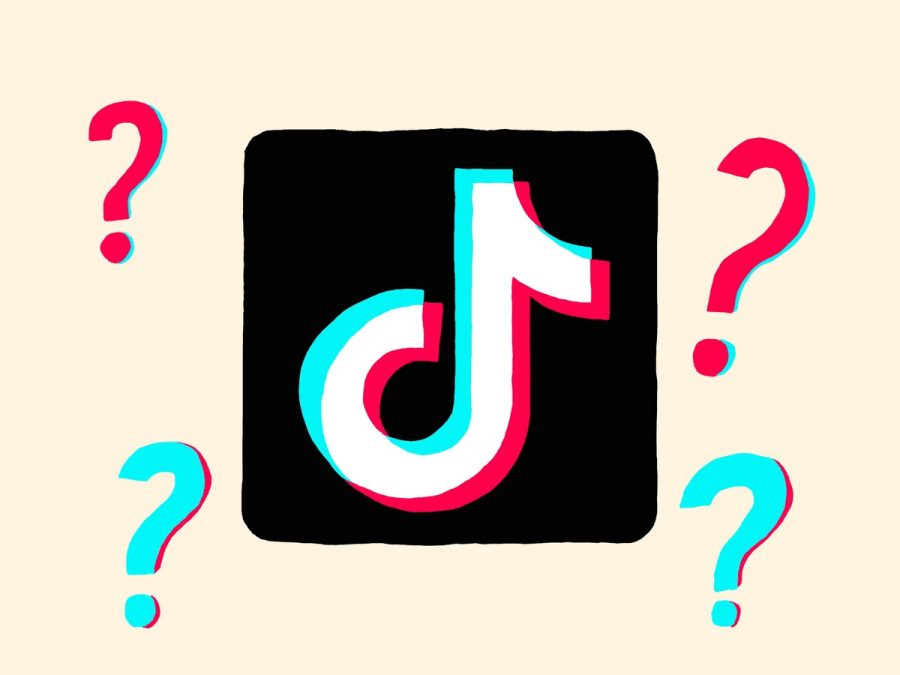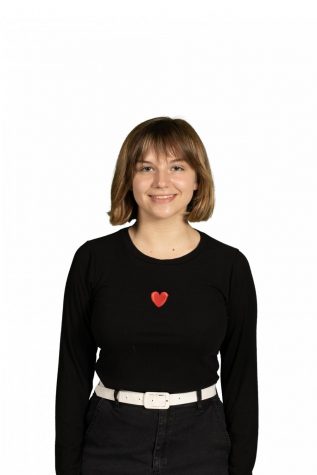TikTok tunes
TikTok’s impact on the modern musician
Photo by Peyton Sims
Graphic
February 26, 2020
“Hot Girl Bummer.” “Sweet But Psycho.” “GOMF.” Three songs part of an ever growing category the internet has claimed as its own. These titles might not ring a bell, but each tune is recognizable if one listens to them for a few seconds. 15 seconds to be exact.
These songs, among many more, have gained traction thanks to TikTok, a social media platform taking Generation Z by storm. The app’s defining characteristic is its use of lip synching to engage viewers. Although Instagram and Twitter thrive on picture sharing, TikTok is completely video based. Due to this, musicians have flocked to TikTok and shaped it into what it is today: an app that takes songs and gives them a life of their own.
Songs adopted by TikTok vary by genre and content. The app seems to choose their music at random, jamming to anything from Broadway to rap to rock and roll. All music played on the app has just one thing in common: they are all forced into the label of “TikTok songs.”
Being a “TikTok song” comes with several assumptions. As 60% of American users are between 16 and 24, the app’s music is assumed to be childish. TikTok is renowned for its humor, so its songs must be of little depth. Most of all, it’s nothing more than meaningless lyrics set to a meaningless beat. Whether this idea helps or hurts the person behind the music is debatable.
“TikTok is an app for one hit wonders, so it depends on what the artist wants for their career,” sophomore Maddie Frost said. “Usually, not all the time, but usually, TikTok fame does not last long and [it] doesn’t make an artist mainstream famous.”
The longevity of a TikTok song is shown in how unrecognizable their artists and titles are. Musicians get their fifteen minutes of fame from fifteen second clips. Although their song may become a favorite of TikTokers, many people don’t associate this music with the artist. Rather, they act like the piece was created by the app that popularized it.
Musicians like Ava Max and DVBBS may not have achieved stardom from their song’s use on the platform, but some artists have seen commercial success. Before TikTok could claim Lil’ Nas X’s “Old Town Road” as their own, the artist introduced his song to the app. What gave the jam fame was TikTok’s poking fun at its country sound. “Old Town Road”’s TikTok time then turned into radio play, a rare transition for the platform. While the song is now as mainstream as it gets, it was once just another Internet clip.
TikTok has brought about a new evolution in internet comedy: the musical meme. Reddit and Twitter popularized the classic meme, a photo accompanied by text in the top and bottom. When this idea meets video formats, the possibilities are limitless.
Musical memes, while insignificant on their own, form entire subcultures of modern comedians. The humorous component of the platform eases users into songs of different genres and eras.
TikTok is more than an app. It’s a time machine.
“A lot of people have [revisited] a lot of songs like ‘Put Your Head on my Shoulder’ [and other] things from the 50s,” Frost said. “There is a very real phenomenon of songs becoming outdated and forgotten. Ballads from generations ago deserve way better than to be forgotten by this generation.”
While oldies aren’t teens’ least favorite genre, jazz and classical tunes aren’t exactly adored by younger age groups. TikTok gives songs overshadowed by modern music a place for exposure, enlarging fanbases decades after a band’s prime.
These new fanbases play a role in giving old songs new meanings. A remix of the 1927 Disney song “Spooky Scary Skeletons” is a popular tune for TikTok dancers. Although it’s a lighthearted song to begin with, the beat of the newer version makes it more energetic. This twist makes it more enjoyable to the shrinking attention spans of today.
TikTok’s twists on classics don’t have to change the song itself. “YMCA” is often used as background music in a trend incorporating the platform’s face tracker feature. The meme goes as follows: two people stand with their backs against the camera. When the users turn around, whoever the face tracker lands on first has to do an action agreed upon before the TikTok starts. The music is what adds a mood to all this.
Trumpets blare the iconic tune as TikTokers anticipate for the beat to drop. When it does, users jump to face the phone screen. Musical accompaniment can give these 15 second clips a rising action and climax. These old timey tunes add storytelling elements one would be hard pressed to find on Instagram or Twitter.
Experiencing less modern music doesn’t require a big time jump. TikTok has also revived the emo movement of the early to mid 2000s. Except now it has a contemporary twist. With smudged eyeliner replaced by sharpied hearts on cheeks, the modern emos have trademarked a new, dividing name for themselves: E-boys and e-girls.
“A lot of people have different opinions about it, but to me it’s more of the new emo fashion style,” freshman Savannah Hallenbeck said. “Like wear a lot of black and have hearts on your cheeks. But it’s also the kind of music you listen to, like My Chemical Romance, since they’re making a comeback.”
An alternative rock band that broke up in 2013, My Chemical Romance recently announced their reunion tour for later this year. When news broke out, fans turned to TikTok to express their excitement. This reinforced the app’s e-culture and further spread “emo” music through TikTok.
“[TikTok] has kind of normalized alternative culture and makes it seem less weird,” Hallenbeck said. “However, it also causes confusion for people who don’t know much about [different] subcultures. People who are goth [or] punk are getting called e-girls and e-boys and some people don’t like that.”
TikTok’s knowledge of alternative culture is limited, but they couldn’t understand their demographic any better. The app plasters these memes and trends on the “For You” pages of every user’s phone. New viewers then stumble upon an idea, embellish on it, and possibly make a subculture of their own. It’s a virtual cycle that shows no signs of stopping. Not even the most influential TikTokers may realize the impact they have on what music they lip synch to.
They’re blasting through the phones of American youths. They’re hummed through the lips of the internet’s most avid users. Realize it or not, TikTok songs are changing music as we know it, one song snippet at a time.
















